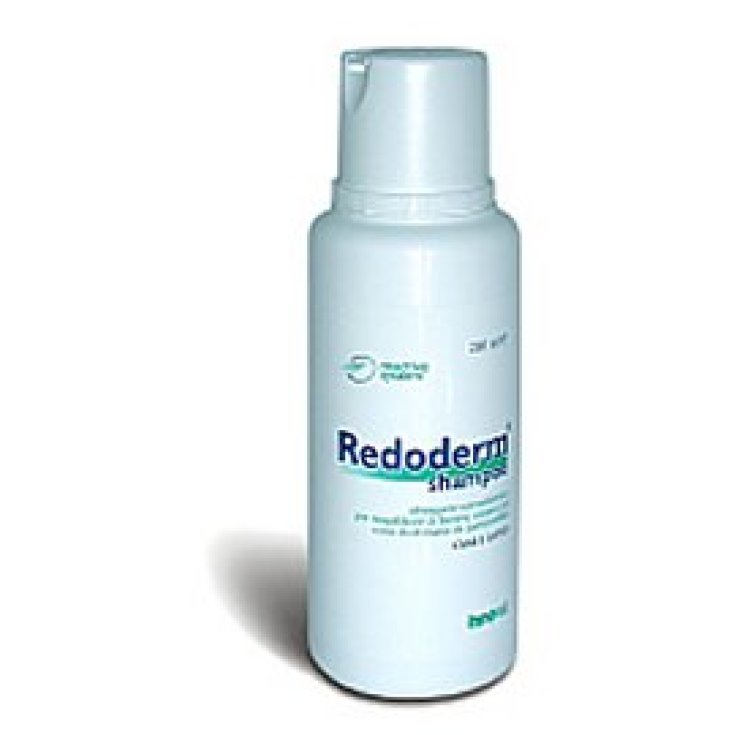Redoderm Shampoo Dog / gat250ml
19.37€
23.00€

- Brand: INNOVET ITALIA Srl
- Product Code: 901133607
- EAN: 8021676020033
- Availability: In Stock
- Purchase 3 items for 18.98€ each
- Purchase 4 items for 18.60€ each
- Purchase 5 items for 18.21€ each
Redoderm
shampoo
Gentle cleansing of animals suffering from hypersensitivity skin diseases.Orthodermic cleansing base
It cleanses skin and coat, reducing the superficial allergenic charge, respecting the natural lipid composition of the integumentary system.
Titalin-Zn
Normalizes the epidermal structure and barrier, rebalancing the turnover and convergence of keratinocytes and contributes to the control of the superficial microbial flora both directly (undecylenic acid, octopirox), and indirectly (echinacea vegetal extract), through the strengthening of the body's natural defenses.
How to use
Apply in modest quantity on the wet coat. Gently massage until a foam is evenly distributed throughout the body. Leave on for at least a minute, then rinse with warm water. Dry immediately. Repeat as needed on a weekly basis.
Components
Titalin-Zn, ceramides (FCM), undecylenic acid, octopirox, echinacea purpurea (extract), normodermic washing base.
Format
Bottle of 250 ml
Cod. 2003
Bibliography
- Re G et al. Palmitoylethanolamide, endocannabinoids and relatedcannabimimetic compounds in protection against tissue inflammation and pain: Potentialuse in companion animals. Vet J. 2007; 173 (1): 23-32
- Miolo A et al. Aliamides modulate skin mast cell degranulation in dogs and cats. J Vet Pharmacol Ther 2006; 29 Suppl 1: 204-5
- Jack D. Aliamides: a new approach to the treatment ofinflammation. Drug News Perspect. 1996; 9 (2): 93- 98
- Eberlein B et al. Adjuvant treatment of atopic eczema: assessment of an emollient containing N-palmitoylethanolamine (ATOPA study). J Eur AcadDermatol Venereol. 2008; 22 (1): 73-82
- Fabbrini F. Adelmidrol in dog itching: field study Proceedings SkinALIA2012, Verona, 30-31 March 2012
- Scarampella F et al. Clinical and histological evaluation of ananalogue of palmitoylethanolamide, PLR 120 (comicronized Palmidrol INN) in cats witheosinophilic granuloma and eosinophilic plaque: a pilot study. Vet Dermatol 2001; 12 (1): 29-39
- Waisglass S et al. Palmitoylethanolamide (palmidrol, inn) in the management of dog atopic dermatitis. Randomized, double-blind, placebo-controlled study. Proceedings 62nd SCIVAC international congress, Rimini 29-31 May 2009, p. 564
- Marsella R et al. Evaluation of the effects of Palmitoylethanolamide on clinical signs in house dust mite allergic high IgE Beagle dogs using a randomized, double blinded, placebo controlled design. Vet Dermatol 2005; 16 (3): 202
- Cerrato S et al. Effects of palmitoylethanolamide on thecutaneous allergic inflammatory response in Ascaris hypersensitive Beagle dogs. Vet J. 2012; 191 (3): 377-82
- Puigdemont A. Palmitoylethanolamide and Adelmidrol in veterinary dermatology: in vitro and in vivo data. Proceedings SkinALIA2012, Verona, March 30-31, 2012
- Iuvone T. Role of aliamides in the control of chronic skin inflammation and pruritus. Proceedings SkinALIA2012, Verona, 30-31 March 2012
- Abraham F et al. Mast Cell Morphometry and Densitometry inExperimental Skin Wounds Treated With a Gel Containing Adelmidrol: A Placebo ControlledStudy. Wounds 2008; 20 (6): 149-157
- Metz M et al. Pruritus: an overview of current concepts. VetDermatol. 2011; 22 (2): 121-131
- Harvima IT, Nilsson G. Mast Cells as Regulators of SkinInflammation and Immunity. Acta Derm Venereol. 2011; 91 (6): 644-50
- Paus R et al. Neuroimmunoendocrine circuitry of the'brain-skin connection 'Trends Immunol. 2006, 27 (1): 32-9
- DeBoer DJ. Etiopathogenesis of canine atopic dermatitis: anupdate. Proceedings SIDEV Seminar "Updates on allergic skin diseases of dogs and cats", Cremona, January 28-29, 2012, pp. 5-7
- Marsella R, Samuelson D. Unraveling the skin barrier: a newparadigm for atopic dermatitis and house dust mites. Vet Dermatol 2009; 20 (5-6): 533-540
- Cornegliani L et al. Transepidermal water loss in healthy wentpic dogs, treated and untreated: a comparative preliminary study. Vet Dermatol 2012; 23 (1): 41-4, e9-10

